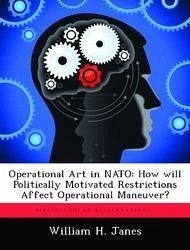FM 100-5, Operations, published in May, 1986, contains AirLand Battle doctrine which our Army will use into the next century. The new doctrine is considerably different from the Active Defense doctrine of the 1970's. Supported by the Army's top leaders, AirLand Battle is being integrated into the OPLANs of our NATO forces. This integration will not be completed without difficulty as the political restrictions imposed by the concept of forward defense and the prohibition of crossing the international border may limit the operational commander. This study examines the extent of these restrictions and what, it any, impact they will have. The study summarizes the main concepts of operational art from FM 100-5 and historical examples of operational maneuver being restricted. Manstein's campaign into Russia during 1941-43 provides excellent examples of a commander proficient in developing a campaign plan and using operational maneuver. His campaigns are also relevant to this study as Hitler imposed restrictions which adversely affected operational maneuver. Contemporary articles are reviewed to determine US and Allied interpretations of AirLand Battle in NATO's defense. A Federal Republic of Germany (FRG) White Paper stipulates the concern of their government with the political implications of our new doctrine. The conclusions show the disconnect between theory and its application in NATO. The concept of forward defense places our forces well forward in a linear, terrain oriented posture. The FRG government does not want us to cross the international border. Offensive action against Warsaw Pact forces is not in line with FRG political objectives. These restrictions combine to greatly limit the operational commander. We have a doctrine that is being applauded throughout our Army; yet, it has not been as widely approved in NATO where we may fight using AirLand Battle. We must recognize this disconnect between doctrinal theory and application in the NATO theater of operatio








